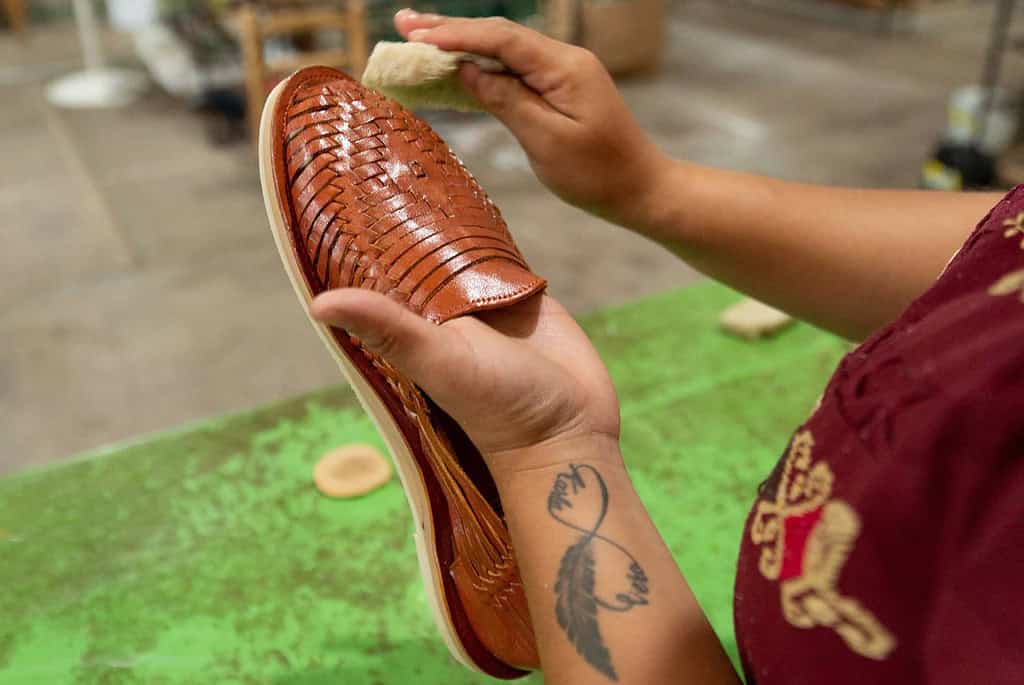
Huaraches are more than just footwear—they are a piece of cultural identity, a testament to skilled craftsmanship, and a symbol of timeless design. Originally handcrafted by Indigenous communities in Mexico, huaraches have evolved without losing their essence. They represent a seamless blend of tradition and fashion, crossing borders and generations while staying rooted in authenticity.
The Origins and Cultural Significance of Huaraches
Huaraches trace their roots to pre-Columbian Mexico, where native artisans made sandals from woven leather and natural fibers. The term “huarache” is derived from the Purépecha word “kwarachi,” and for centuries, these shoes served practical purposes for agricultural workers and villagers navigating rugged terrain. The design emphasized breathability, comfort, and durability, making them an ideal choice in warm climates and rough rural landscapes.
The construction of traditional huaraches was not industrial. Every pair was a unique creation, formed by hand using leather strips, rawhide, and recycled tire rubber for soles. This slow, artisanal process gave each pair its own personality and made huaraches more than just a product—they were an extension of the maker’s skill and creativity.
Over time, huaraches took on deeper cultural meanings. They were part of daily life, but they also played a role in ceremonies, celebrations, and even resistance. Wearing huaraches became a subtle way of preserving Indigenous identity in the face of colonial and modern pressures. Today, many communities still view them as symbols of heritage and pride, and modern makers often stay loyal to the traditional techniques that gave huaraches their lasting value.
Craftsmanship and the Modern Market
While factory-made versions have emerged to meet growing global demand, many of the finest huaraches are still produced by artisans using the time-honored methods passed down through generations. The process begins with soaking leather to increase flexibility, followed by intricate hand-weaving that can take several hours per shoe. The soles are typically stitched by hand rather than glued, which increases longevity and maintains structural integrity.
Modern fashion has rediscovered huaraches for their sustainable appeal and rustic beauty. They are now featured in boutiques, urban streetwear collections, and ethical fashion lines. As consumers lean toward slow fashion and handcrafted goods, huaraches occupy a space that honors history while adapting to contemporary needs.
Some brands have partnered with traditional artisans to ensure that the craftsmanship behind huaraches is preserved and respected. These collaborations often provide stable income and visibility to local communities while offering global shoppers access to authentic, high-quality products. There is a rising awareness about the importance of transparency and fair trade in the fashion world, and huaraches fit well into this conversation.
Synthetic imitations may capture the silhouette, but they often miss the soul of the original. What sets handcrafted huaraches apart is not just the look but the story behind every pair. The imperfections, the texture of the leather, and the individualized fit are all part of what makes them truly special.
Style Versatility Across Seasons and Cultures
Huaraches have made their way from rural fields to city sidewalks without losing their charm. One reason for their growing popularity is their versatility. Their breathable construction makes them perfect for summer wear, allowing airflow while still offering foot coverage. At the same time, their classic profile and neutral tones make them adaptable to a variety of outfits.
They pair effortlessly with linen pants, denim, dresses, or even tailored trousers. This adaptability has made huaraches a favorite among stylists seeking an understated but rich aesthetic. They carry a casual elegance that fits seamlessly into many wardrobes without appearing too trendy or out of place.
Designers have also embraced huaraches, introducing them into high fashion settings with slight modifications. Some versions feature colorful dyes, updated soles, or hybrid forms that combine traditional uppers with contemporary silhouettes. Despite these innovations, the essence of the original design is often preserved.
Huaraches also bridge cultural divides. They have become popular in parts of the United States, especially in states with strong Mexican-American communities. Festivals, art shows, and local markets frequently showcase huaraches, where they represent both cultural pride and a sense of identity. The shoes resonate with wearers who want to stay connected to their roots or simply appreciate the authenticity and craftsmanship involved.
As fashion becomes increasingly globalized, items like huaraches remind consumers of the importance of origin. Wearing them is not just about style but about acknowledging a deeper narrative—one of resilience, innovation, and respect for artistry.
Caring for Huaraches to Preserve Their Integrity
Leather huaraches, like all handmade footwear, require a degree of care to maintain their shape, flexibility, and look. The natural materials used in their construction react to weather, moisture, and wear differently than synthetic shoes. Understanding this can extend the life of huaraches and keep them looking their best.
The leather used in huaraches often softens and molds to the foot with wear, which is one of their most appreciated qualities. However, exposure to excessive water or direct sunlight can cause the leather to dry out or crack. Storing them in a cool, dry place helps prevent this, and occasional conditioning with a leather-safe product can replenish moisture and retain suppleness.
Cleaning huaraches should be done with care. A damp cloth is usually sufficient for surface dirt, but stubborn spots can be treated with a soft brush and mild soap. Harsh chemicals or soaking should be avoided, as these can damage both the leather and the stitching.
Over time, the soles may show signs of wear, especially if made from traditional recycled materials. Some users opt to have them resoled by cobblers who understand artisanal shoes, allowing them to continue wearing a favorite pair for years. This possibility of repair rather than replacement reflects a growing movement toward sustainability and mindful consumption.
By treating huaraches as long-term items rather than disposable fashion, wearers contribute to the preservation of traditional practices and reduce their environmental footprint. It’s a small but meaningful way to support ethical consumption while enjoying comfort and style.



